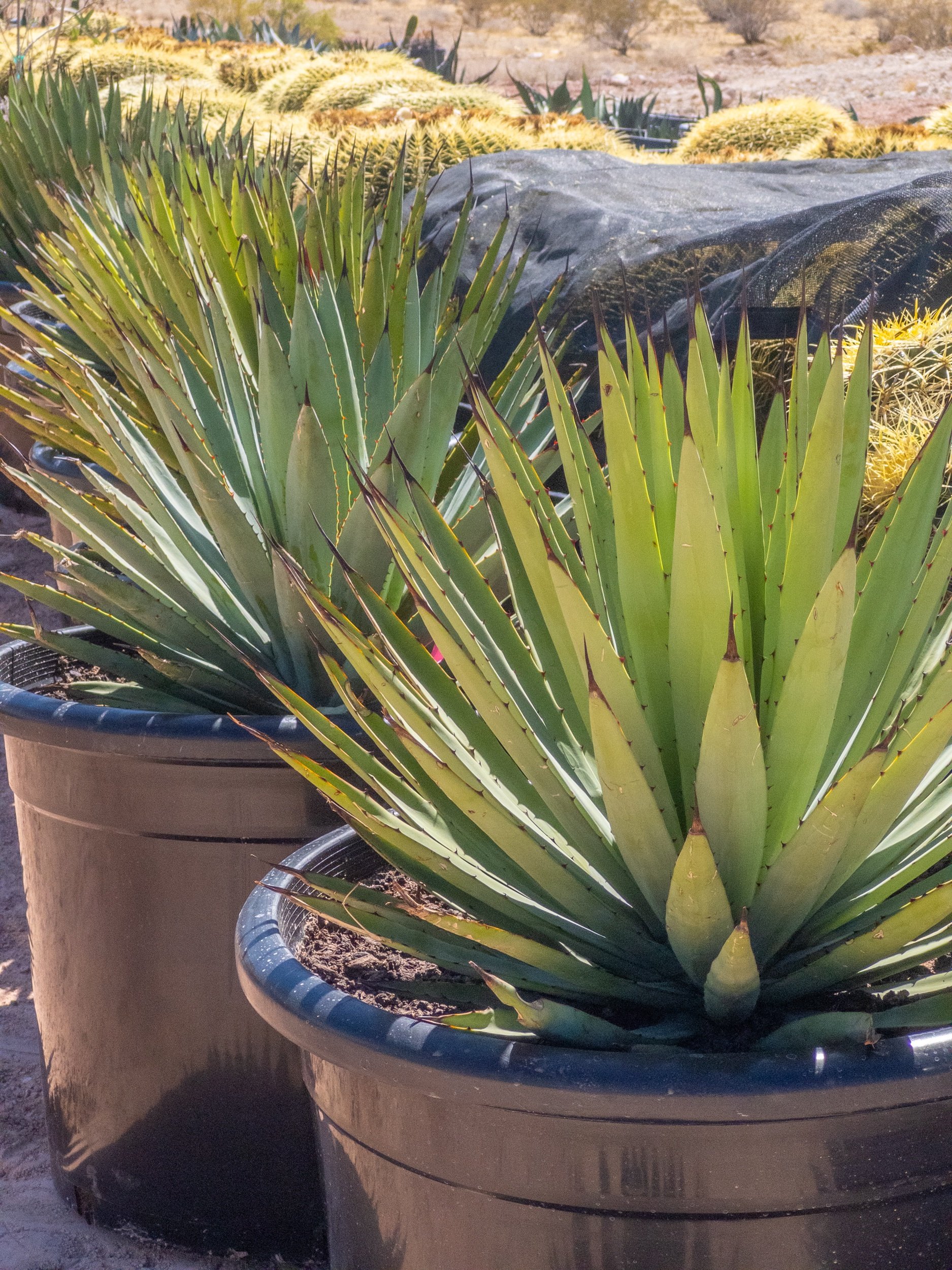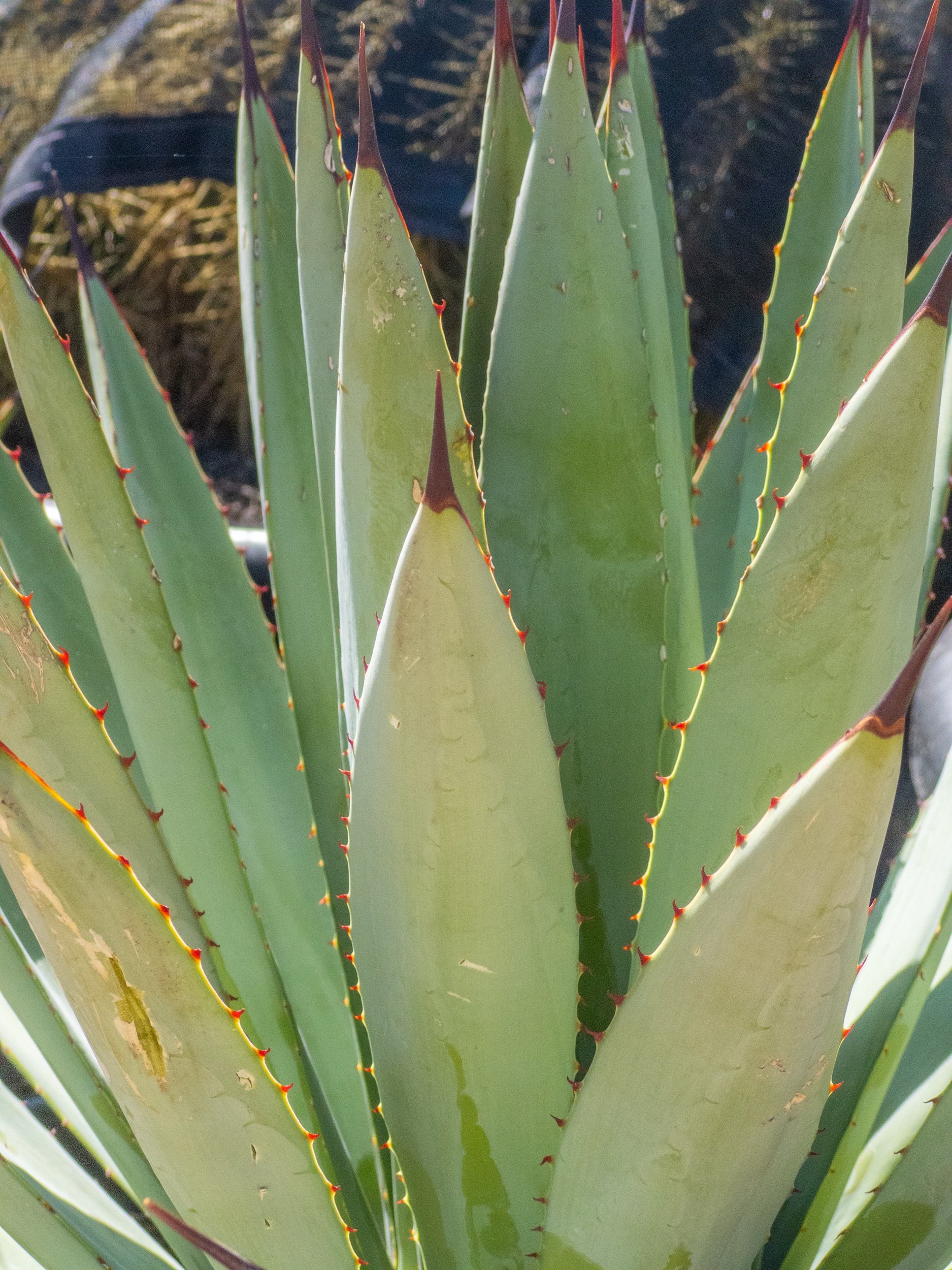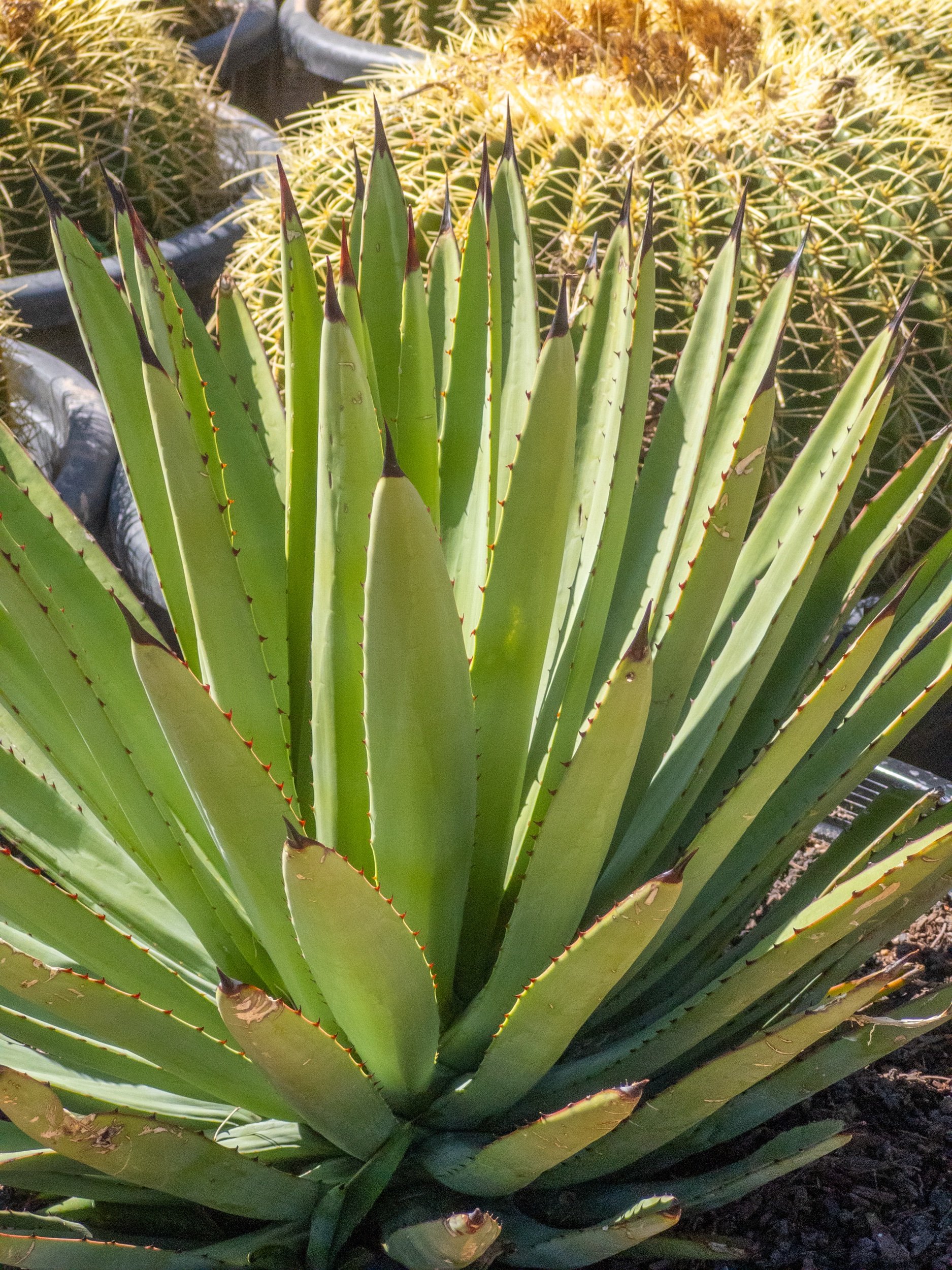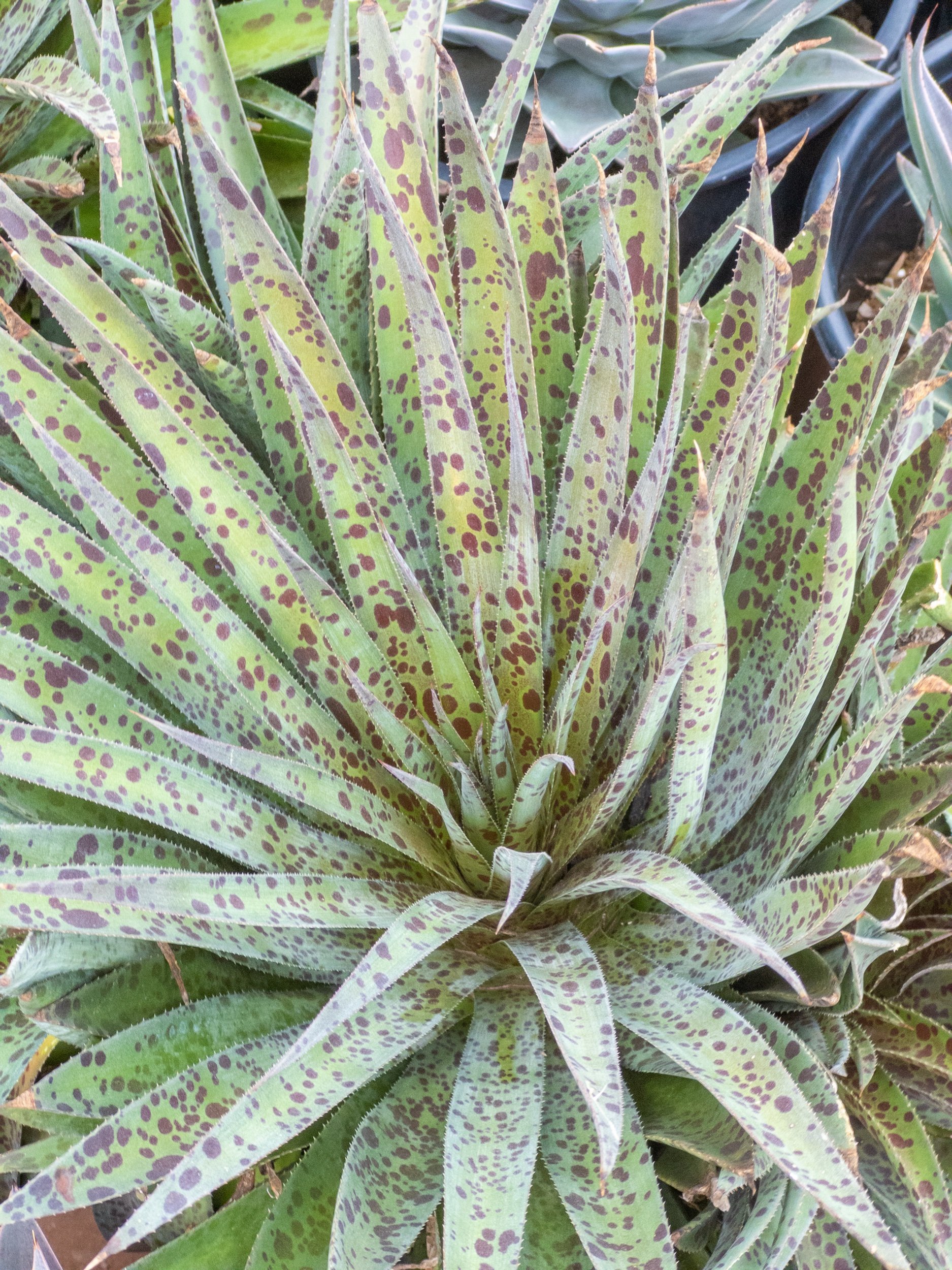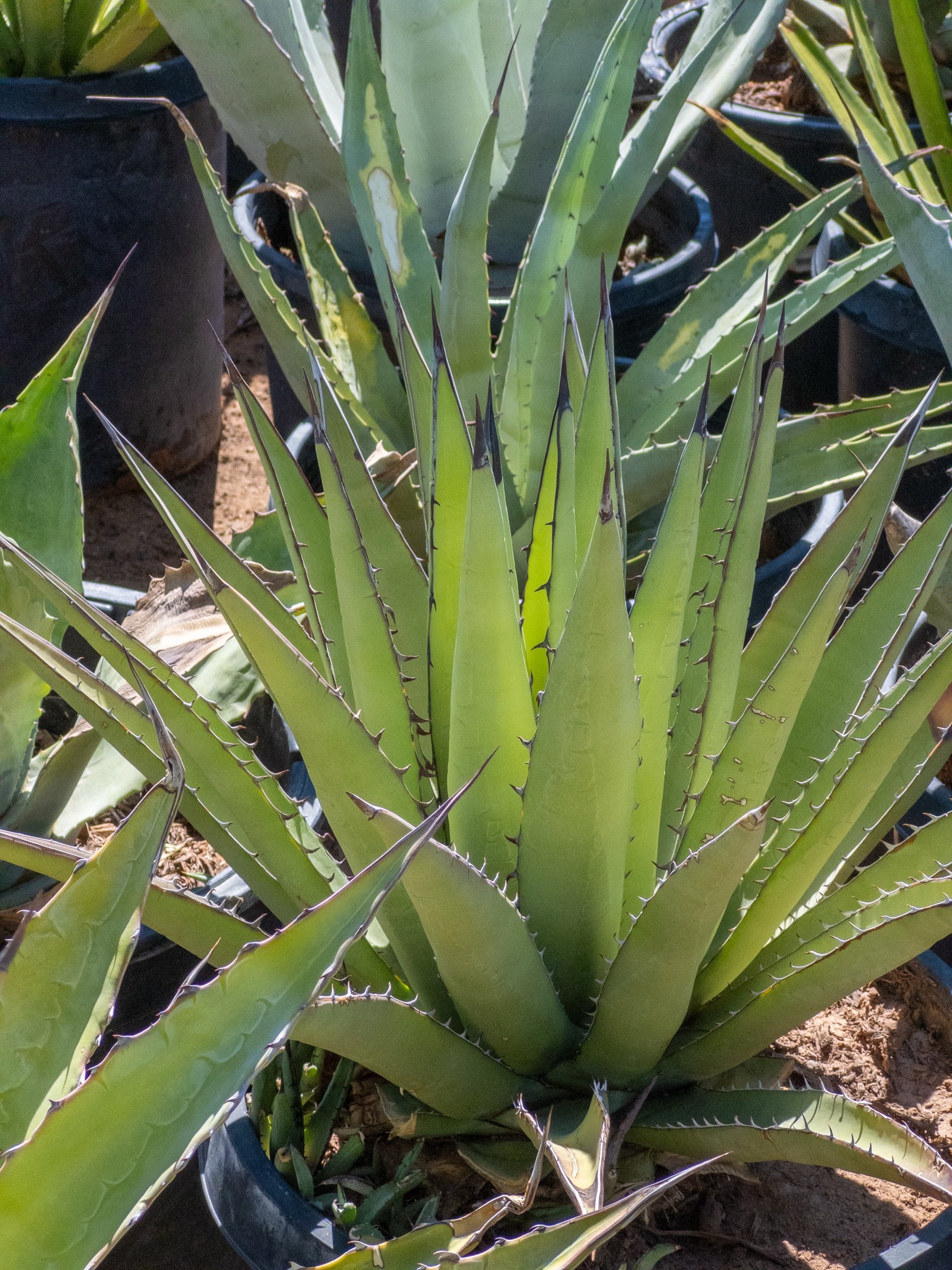Agave Macroacantha
Agave macroacantha – Black-Spined Agave: A Sleek Desert StarTurn up the drama with the Agave macroacantha, or Black-Spined Agave, a compact succulent that’s pure architectural fire. Native to Oaxaca and Puebla, Mexico, this beauty forms a tight, symmetrical rosette of slender, powdery blue-gray leaves, growing 1-2 feet tall and 2-3 feet wide. Each leaf is razor-straight, tipped with a bold, black spine up to 1.2 inches long, and lined with small, dark brown teeth—perfect for a striking, low-maintenance focal point. Over time, it forms clumps with offsets, amplifying its wow factor.
Care Made Easy:
• Sun: Full sun is its vibe—6+ hours daily keeps its color vivid and shape sharp. Light shade is okay but won’t pop as much.
• Water: Drought-tough—water deeply every 2-3 weeks in summer, letting soil dry out completely. In winter, go minimal, once a month or less.
• Soil: Needs gritty, well-drained soil—cactus mix or sandy gravel is spot-on to avoid soggy roots.
Ideal for rock gardens, xeriscapes, or statement pots, this agave thrives in USDA zones 9-11, handling dry heat like a champ and tolerating cold to 25°F (-4°C)—keep it dry in winter chills. After 10-15 years, it may send up a 10-foot spike of reddish-gray flowers—a monocarpic finale, but offsets keep the show alive. Place away from paths; those spines are sharp, and sap can irritate pets or skin.
Agave macroacantha – Black-Spined Agave: A Sleek Desert StarTurn up the drama with the Agave macroacantha, or Black-Spined Agave, a compact succulent that’s pure architectural fire. Native to Oaxaca and Puebla, Mexico, this beauty forms a tight, symmetrical rosette of slender, powdery blue-gray leaves, growing 1-2 feet tall and 2-3 feet wide. Each leaf is razor-straight, tipped with a bold, black spine up to 1.2 inches long, and lined with small, dark brown teeth—perfect for a striking, low-maintenance focal point. Over time, it forms clumps with offsets, amplifying its wow factor.
Care Made Easy:
• Sun: Full sun is its vibe—6+ hours daily keeps its color vivid and shape sharp. Light shade is okay but won’t pop as much.
• Water: Drought-tough—water deeply every 2-3 weeks in summer, letting soil dry out completely. In winter, go minimal, once a month or less.
• Soil: Needs gritty, well-drained soil—cactus mix or sandy gravel is spot-on to avoid soggy roots.
Ideal for rock gardens, xeriscapes, or statement pots, this agave thrives in USDA zones 9-11, handling dry heat like a champ and tolerating cold to 25°F (-4°C)—keep it dry in winter chills. After 10-15 years, it may send up a 10-foot spike of reddish-gray flowers—a monocarpic finale, but offsets keep the show alive. Place away from paths; those spines are sharp, and sap can irritate pets or skin.
Agave macroacantha – Black-Spined Agave: A Sleek Desert StarTurn up the drama with the Agave macroacantha, or Black-Spined Agave, a compact succulent that’s pure architectural fire. Native to Oaxaca and Puebla, Mexico, this beauty forms a tight, symmetrical rosette of slender, powdery blue-gray leaves, growing 1-2 feet tall and 2-3 feet wide. Each leaf is razor-straight, tipped with a bold, black spine up to 1.2 inches long, and lined with small, dark brown teeth—perfect for a striking, low-maintenance focal point. Over time, it forms clumps with offsets, amplifying its wow factor.
Care Made Easy:
• Sun: Full sun is its vibe—6+ hours daily keeps its color vivid and shape sharp. Light shade is okay but won’t pop as much.
• Water: Drought-tough—water deeply every 2-3 weeks in summer, letting soil dry out completely. In winter, go minimal, once a month or less.
• Soil: Needs gritty, well-drained soil—cactus mix or sandy gravel is spot-on to avoid soggy roots.
Ideal for rock gardens, xeriscapes, or statement pots, this agave thrives in USDA zones 9-11, handling dry heat like a champ and tolerating cold to 25°F (-4°C)—keep it dry in winter chills. After 10-15 years, it may send up a 10-foot spike of reddish-gray flowers—a monocarpic finale, but offsets keep the show alive. Place away from paths; those spines are sharp, and sap can irritate pets or skin.

